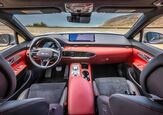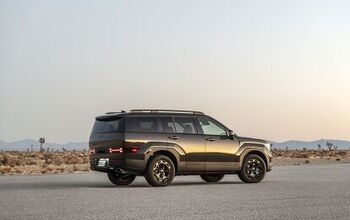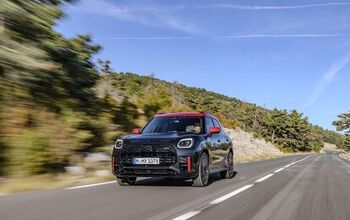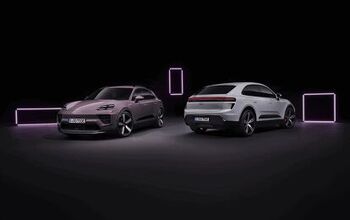10 Cars That Dealers Just Can't Get Rid Of
In the ever-evolving automotive industry, certain vehicles tend to move off the dealership lots faster than others. Factors such as pricing, consumer demand, and brand reputation can significantly influence a car's time on the market. iSeeCars, an automotive research firm, recently conducted a study to identify the ten slowest-selling new cars in the United States. These vehicles, for various reasons, have spent an above-average amount of time waiting for their new owners. Here, we delve into the list of the slowest-selling new cars according to iSeeCars' study.
1. Jeep Cherokee
- Average Days on Market: 128.7
- Average Price: $39,238
The Jeep Cherokee tops the list as the slowest-selling new car, spending an average of 128.7 days on dealership lots. This SUV, known for its rugged off-road capability, might be facing challenges in a competitive market, particularly in its price segment.
2. Land Rover Discovery Sport
- Average Days on Market: 119.4
- Average Price: $53,422
The Land Rover Discovery Sport, a luxury compact SUV, follows closely behind. Its high average price of $53,422 may be a contributing factor to its slower sales pace.
3. Buick Envision
- Average Days on Market: 117.0
- Average Price: $39,917
Buick's Envision occupies the third spot on the list, with an average of 117 days spent on the market. Its price point is similar to the Jeep Cherokee, suggesting a competitive segment.
4. Ford Mustang
- Average Days on Market: 108.6
- Average Price: $56,670
The iconic Ford Mustang ranks fourth, with an average of 108.6 days on dealer lots. Despite its storied history and enthusiast appeal, the high average price of $56,670 might be limiting its market penetration.
5. Mazda MX-5 Miata
- Average Days on Market: 107.3
- Average Price: $34,543
Mazda's MX-5 Miata, a beloved sports car, is fifth on the list. Its comparatively lower average price of $34,543 indicates that other factors, such as consumer preferences or competition, may be influencing its sales pace.
6. Lincoln Aviator
- Average Days on Market: 105.1
- Average Price: $69,283
The Lincoln Aviator, a luxury midsize SUV, ranks sixth, spending an average of 105.1 days on the market. Its elevated price tag of $69,283 positions it as a premium offering, which may contribute to its slower turnover.
7. Nissan LEAF
- Average Days on Market: 95.2
- Average Price: $32,770
The Nissan LEAF, an electric vehicle (EV), takes the seventh spot. Despite the growing interest in EVs, the LEAF spends an average of 95.2 days on dealer lots. Its relatively lower price of $32,770 could be a driving factor for consumers.
8. Ford Edge
- Average Days on Market: 93.6
- Average Price: $42,746
The Ford Edge, a midsize SUV, ranks eighth, with an average of 93.6 days on the market. Its pricing is competitive for its segment, suggesting that other factors are influencing its sales pace.
9. Nissan Murano
- Average Days on Market: 88.7
- Average Price: $45,130
Nissan's Murano secures the ninth spot, spending an average of 88.7 days on dealer lots. Its price point falls between that of the Ford Edge and the Lincoln Aviator.
10. Infiniti QX80
- Average Days on Market: 87.2
- Average Price: $82,847
The luxurious Infiniti QX80 rounds out the list in the tenth position. With an average price of $82,847, this premium SUV caters to a niche market, potentially explaining its slower sales pace.
According to iSeeCars Executive Analyst Karl Brauer, "Dealers and manufacturers have typically targeted 60 days as the time to sell a vehicle." However, the data from this study shows that the ten slowest-selling new cars are all above 87 days on the market, indicating a shift back to a more normal, if not excessive, supply of cars on dealer lots. This shift may be influenced by various factors, including changing consumer preferences, market competition, and pricing strategies.
In conclusion, while these ten vehicles may be the slowest-selling new cars in the market, it's essential to recognize that the automotive industry is dynamic. Factors affecting sales can change rapidly, and manufacturers often adapt their strategies accordingly. As such, the position of these cars on the list may change in the future as the industry continues to evolve.
Become an AutoGuide insider. Get the latest from the automotive world first by subscribing to our newsletter here.
This article was co-written using AI and was then heavily edited and optimized by our editorial team.
More by AutoGuide.com Staff
































Comments
Join the conversation
They need to rate these same vehicles with the colors of the ones that sit that long. I'll bet they are some shade of silver, black or white. People are so tired of the "depression colors". Bring back the lighter shades of actual colors. It doesn't have to be anything radical, but just something less blah. When you go into a parking lot all you see is a sea of grey, black and white. Yeah, there are a couple of red and electric blue ones, but that's about it. And the ones that look like someone clear-coated the primer are horrible. They may call it blue or red or or some color name, but unless the sun is blindingly bright, it just looks like any other black car out there. The light and medium metallic colors of the 70's, 80's and 90's were nice. How about it auto industry...lighten up.
Miatas are great cars, but they appeal to a specialized market. I'm single, so I can use a two-seater, but most families can't. That said, I love my Miata and I hope that when it reaches the end of its life span I'll be able to replace it.